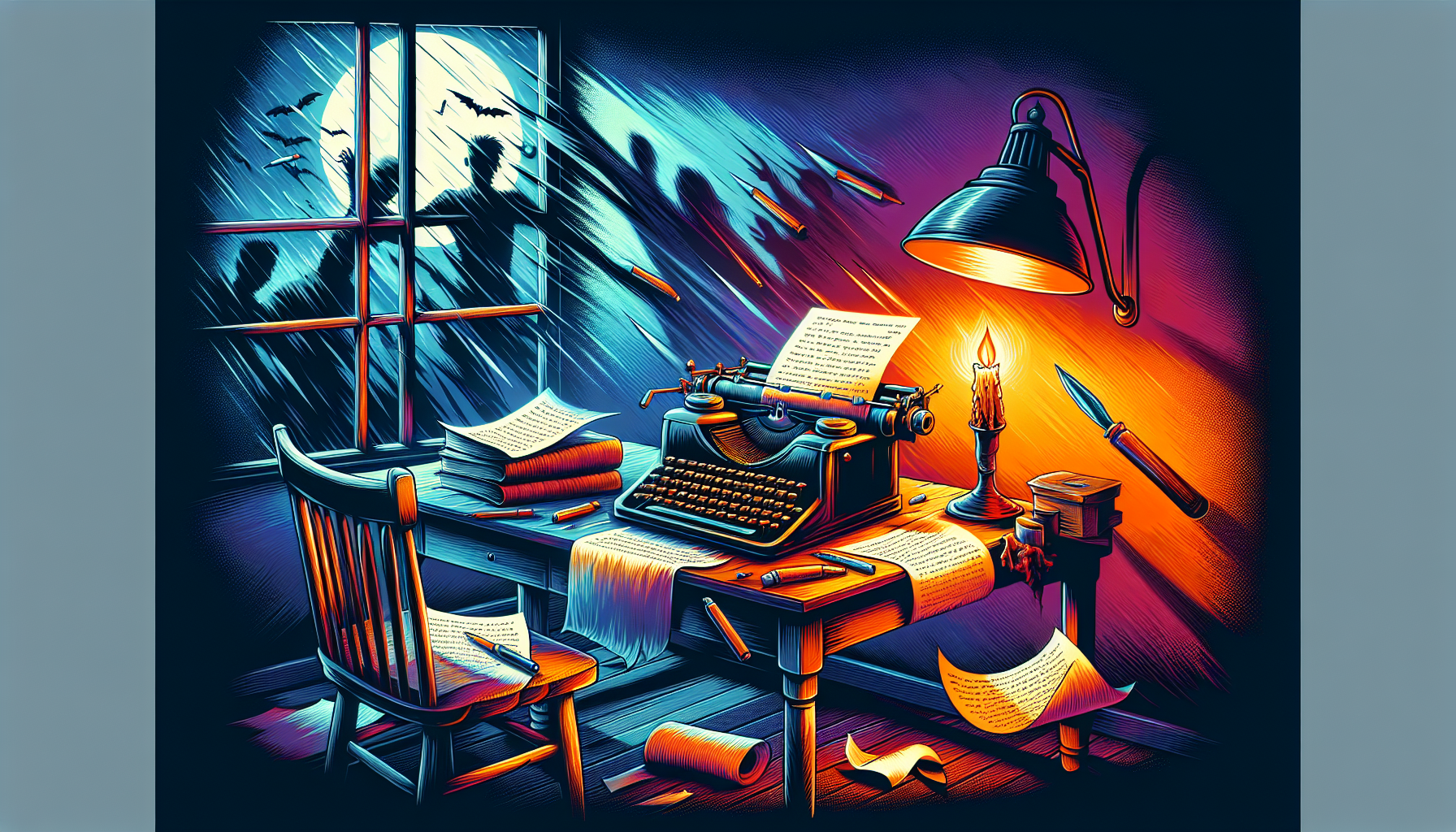The Art of Making Audiences Scream: Crafting Tension in Horror Screenplays
Ah, the horror screenplay, a delectable concoction of fear, suspense, and that oh-so-satisfying jolt of adrenaline. Whether it’s a bump in the night or a full-throttle monster chase, the essence of horror lies in its ability to play jump rope with our pulse rates. But what separates a yawn-inducing snooze-fest from a nail-biting, popcorn-spilling, scream-a-thon? The answer, dear thrill-seekers, is tension. Let’s dive headfirst into the murky waters of fear, exploring techniques that transform horror screenplays from mildly unsettling to sleeping with the lights on material.
Tension Building 101: The Slow Burn
First off, let’s talk pace. A good horror screenplay knows it’s a marathon, not a sprint. The Slow Burn is your friend, creating a simmering pot of tension that keeps audiences teetering on the edge of their seats. To master this, you’ll need to perfect the art of pacing. Introduce unsettling elements gradually, like breadcrumbs leading deeper into the forest. Your audience’s fear will grow with each step, building a delicious anticipation of horror that keeps them glued to the screen.
Character Vulnerability: The Bait on the Hook
Nothing gets an audience on board like a well-placed dose of empathy. When crafting your characters, sprinkle a bit of vulnerability into their DNA. Does your protagonist have a phobia? A deep, dark secret? Good. Use it. When the audience cares about your characters, their fear becomes our fear. It’s like emotional puppetry, and you, my friend, are the puppet master.
A Symphony of Creeps: Sound Design
Never underestimate the power of a creepy sound. Be it the creak of an old floorboard or the distant, unexplained wail of an infant, sound is a potent tool in the horror arsenal. In your screenplay, describe the sounds that make the audience’s imagination run wild. Remember, sometimes what we don’t see scares us more than what we do. Let the audience’s mind fill in the gaps with their own fears. It’s collaborative horror at its finest.
Anatomy of a Scare: Shock vs. Dread
There’s the jump scare, the horror equivalent of a surprise party, and then there’s dread, the lingering sense that something is terribly wrong. Both have their place in your screenplay. A well-timed jump scare can send popcorn flying, but it’s the art of creating dread that will haunt your audience long after the credits roll. Infuse your scenes with a sense of foreboding, that delicious anticipation of horror, and when the time is right, hit them with the scare. It’s about balance. Too many jump scares and you’re crying wolf; not enough, and well, you’re just leading a scenic tour of Spooky Town.
The Unseen Menace: Playing Hide and Seek with Horror
What’s more terrifying than a monster? The suggestion of a monster. Let your audience’s imagination do the heavy lifting by keeping your menace largely unseen. A glimpse of something unsettling, a shadow passing by, or the mere suggestion of danger can be far more terrifying than any CGI monstrosity. This technique ramps up the tension, as the audience’s brain scrambles to fill in the terrifying blanks.
Plot Twists and Turns: Unpredictability is King
Lastly, keep your audience guessing. The moment they think they’ve figured out the plot, throw in a curveball. Predictability is the death knell of tension. When done right, a plot twist can reinvigorate the narrative, sending your audience’s hearts racing all over again. But beware the temptation of twists for twist’s sake; each turn should serve your story, sending it spiraling into unexpected, yet totally believable, realms of horror.
In crafting a horror screenplay, remember that tension is the thread that ties it all together. Whether it’s through a slow-building sense of dread, the vulnerability of your characters, or the chilling use of sound, mastering these techniques can transform your screenplay from simply unsettling to unforgettably terrifying. Happy scaring!







